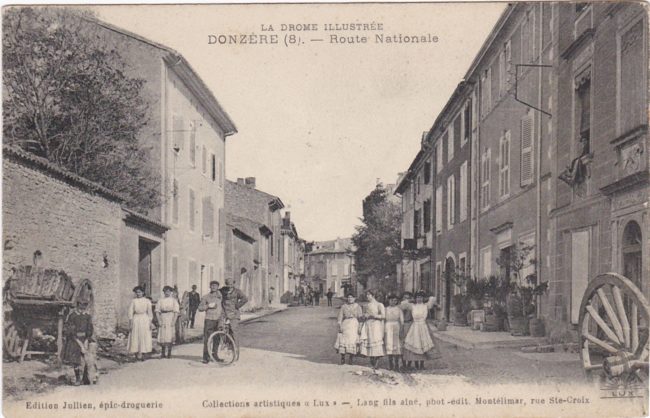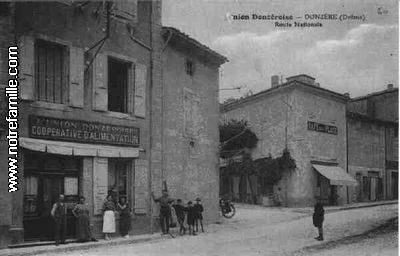


N°3 - Route Nationale 7
Nationale 7 route des vacances “qui fait d’Paris un petit faubourg d’Valence” (Charles Trenet).
L’évocation de cette route mythique rappelle que de tous temps la vallée du Rhône a été un lieu de passage important.
Le bourg de Donzère, situé sur cet axe majeur, a été un des premiers jalons à en bénéficier et ce, bien avant les touristes et les vacanciers, du passage des commerçants, des pèlerins, voire même des troupeaux en transhumance. Mais il en a aussi souffert victime des invasions, des passages de troupes… et des “bouchons” estivaux.
À l’époque romaine, dès le 1er siècle avant JC, passait non loin de Donzère, la “via Agrippa”, sur laquelle était implantée une importante “mutatio” (relais) appelé Novem Craris (actuel Le Logis de Berre).
Précédemment, vers le couchant, surplombant le Rhône, fut aménagée une voie protohistorique, qui durant plusieurs siècles, devint l'unique itinéraire reliant Châteauneuf-du-Rhône à Donzère. Là, “on côtoyait dans un val solitaire un ravin et un rocher à pentes très raides, jusqu’au Serre du Plan, d’où la route se dirigeait sur Donzère à travers un désert affreux où tous les crimes étaient possibles” (Jules Ferrand “Histoire de la principauté de Donzère”). À la fin du XVIIIe siècle, la création d’une route royale permettra d’éviter ce passage difficile.
Suite à l'aménagement de la déviation de la RN7 et à la construction de l'Autoroute A7, l'ancienne RN est devenue une simple départementale, la n° D 844.
Nationale 7 holiday’s road “which makes Paris a small suburb of Valence” (Charles Trenet). The evocation of this mythical road reminds us that the Rhône Valley has always been an important place of passage, whether by the river or by following its banks. Located on this major axis, the town of Donzère was a milestone already benefiting, long before tourists and vacationers, from the passage of traders, pilgrims, and even herds in transhumance. But it has also suffered from it, victim of invasions, passages of troops … and summer corks. In Roman times, from the 1st century BC, the “via Agrippa” passes not far from Donzère a little further East with an important “mutatio” (relay) at Novem Craris, currently “Le Logis de Berre”. At the same time, but more towards the West and not far from the Rhône, there was a protohistoric route, which for several centuries became the only route linking Châteauneuf-du-Rhône to Donzère. There, "we skirted in a solitary valley a ravine and a rock with very steep slopes, up to the Serre du Plan, from where the road headed towards Donzère through a dreadful desert where all crimes were possible" (Jules Ferrand “History of the Principality of Donzère”). At the end of the 18th century, the creation of a royal road will make it possible to avoid this difficult passage. After a long straight line South of Montélimar, it is with a fairly gentle slope and wide curves that the hill of Bel Air is crossed in an inhabited environment, which will not prevent in the 1800s from noticing some attacks towards individuals, even the mail coach. Since the construction of a diversion, then that of the Mediterranean highway, Donzère is now away from traffic. This is how the RN7 became a simple departmental road, the n° D844.

